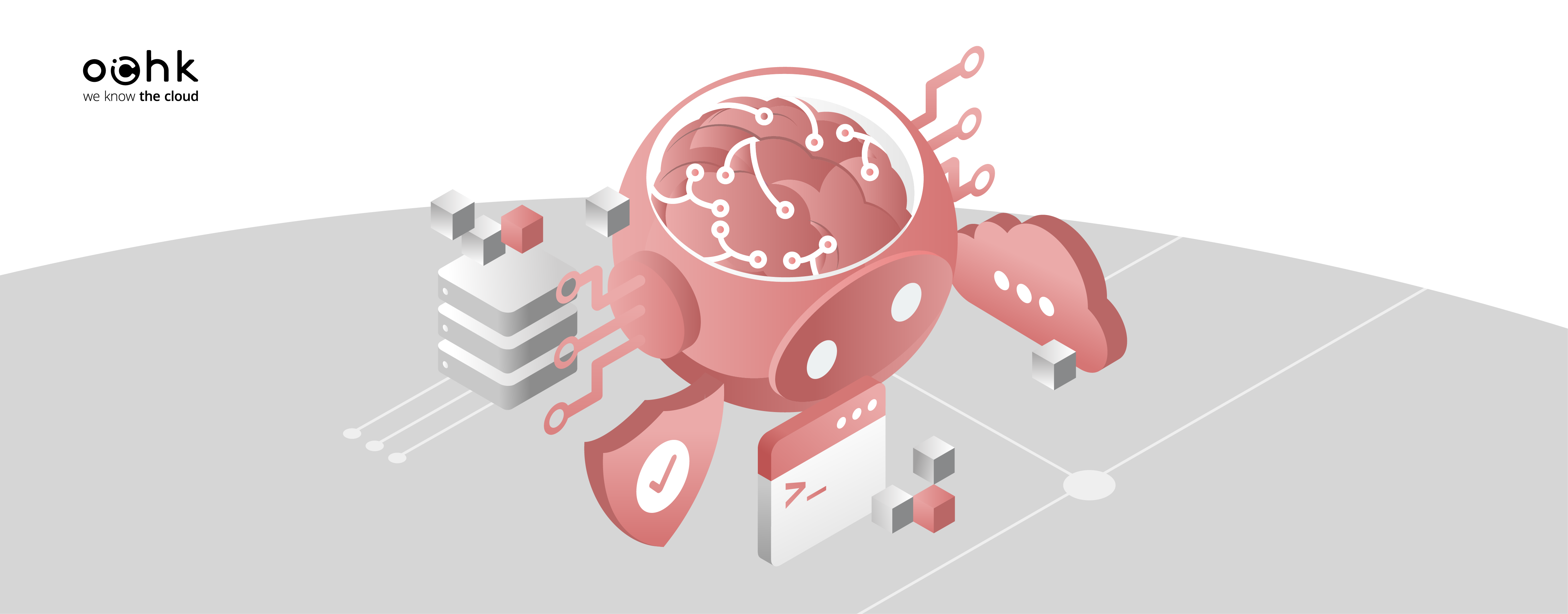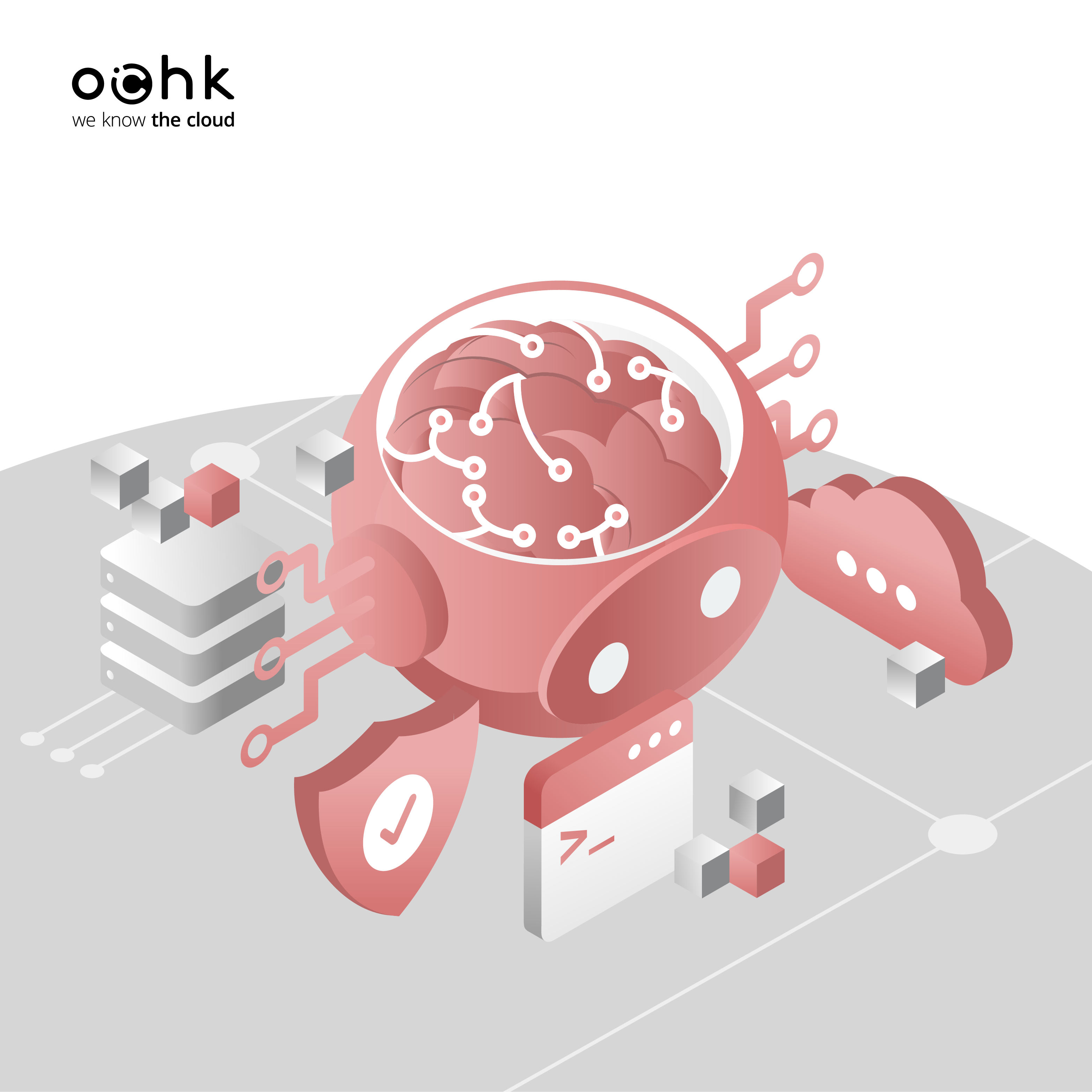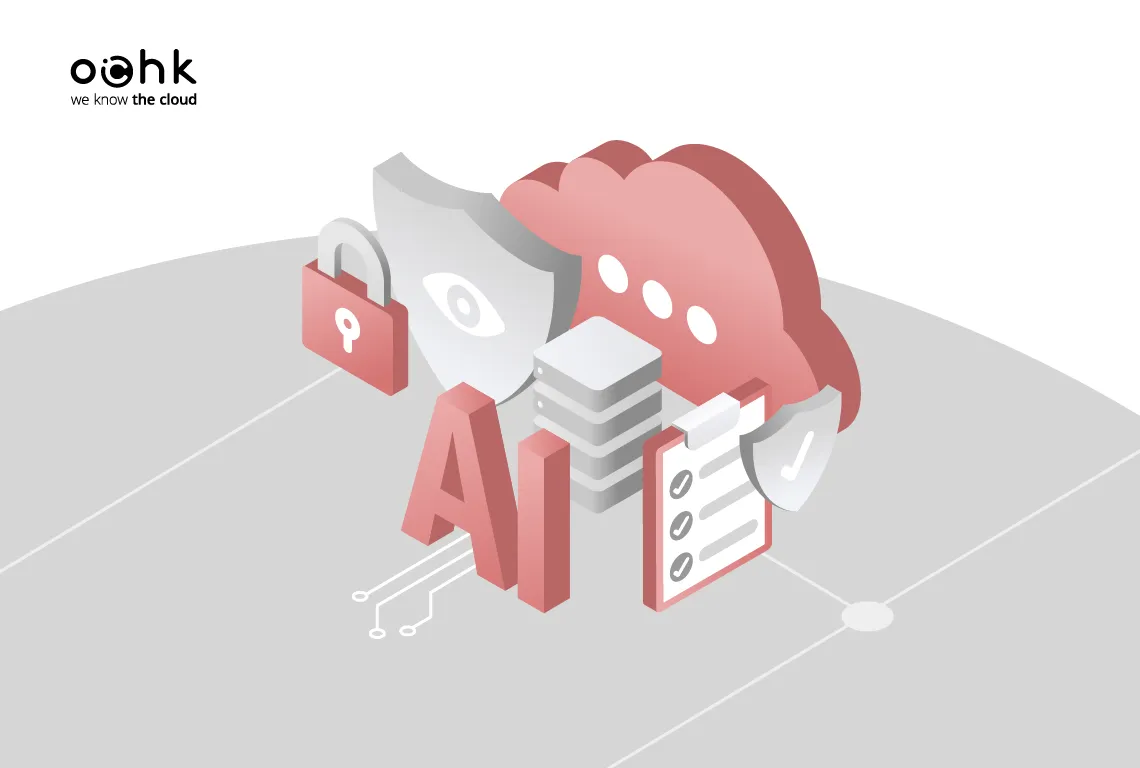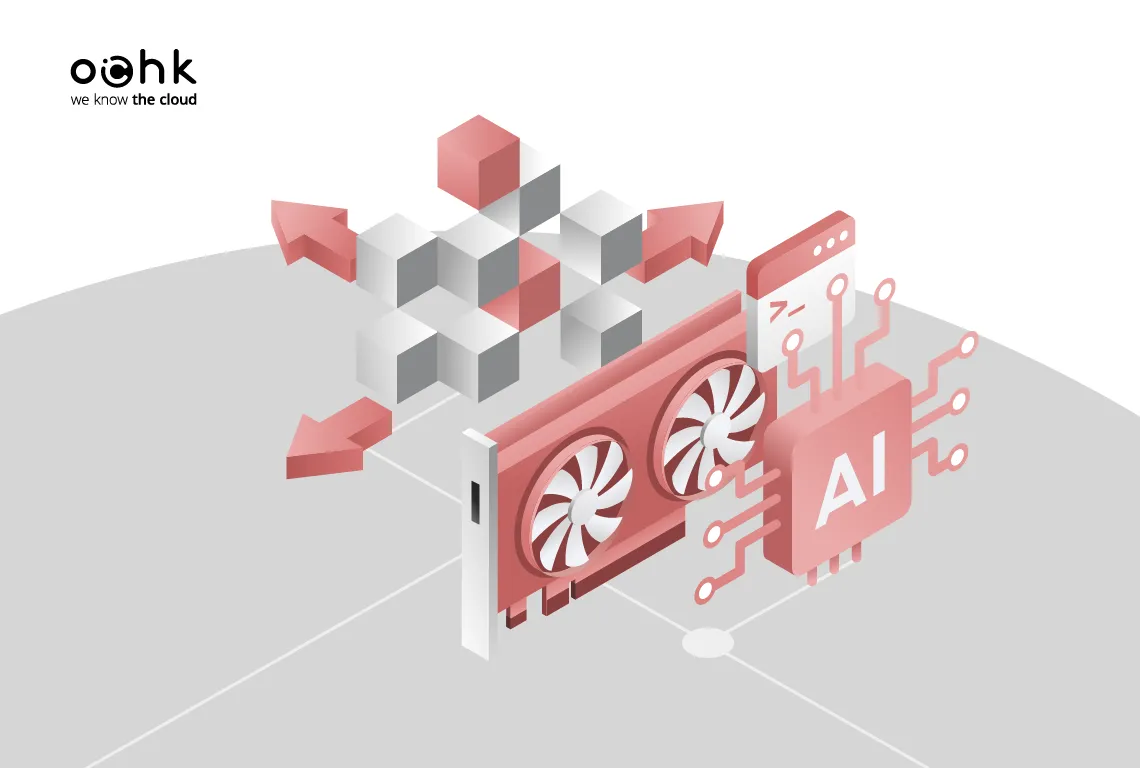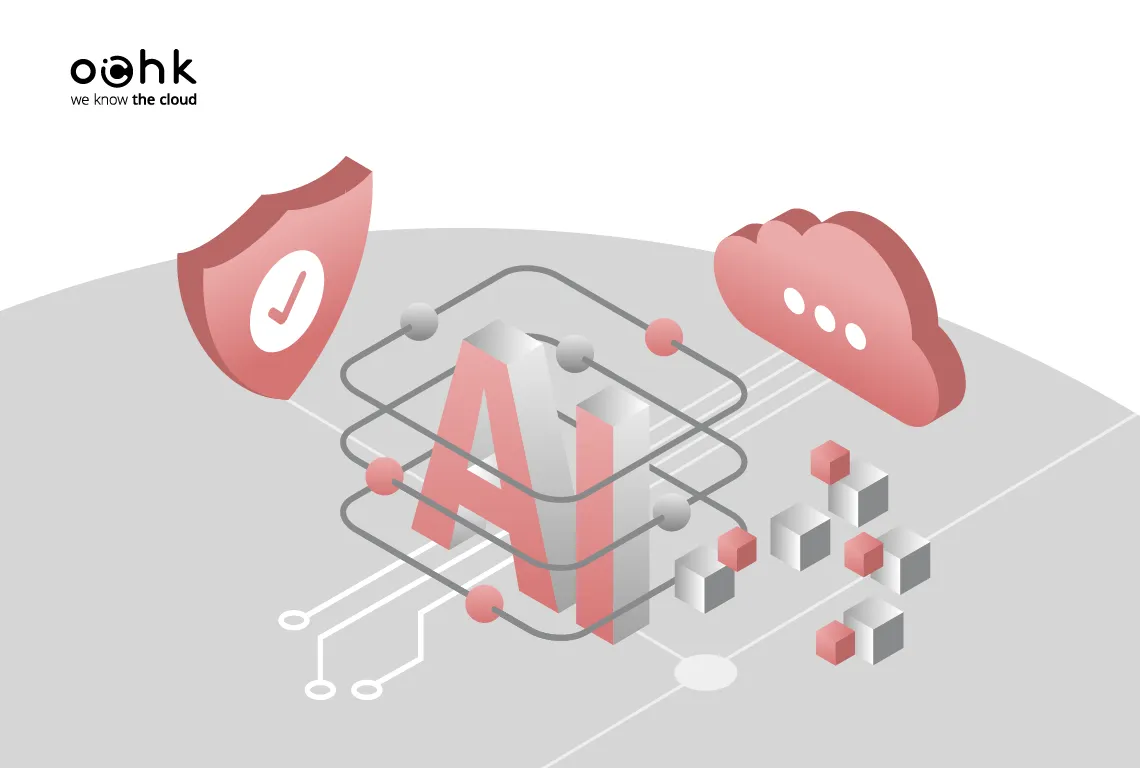Over the past few years, AI models have become ubiquitous, finding applications across almost every industry. As technologically advanced as they are, these tools remain essentially passive. You ask a question—you get an answer. You input data—you receive an analysis. AI waits for user commands like a well-trained virtual assistant that never takes the initiative.
2025 marks a decisive shift toward active AI agents—a whole new level of interaction and action. In this article, you’ll discover:
- what AI agents actually are and how they work,
- whether their rapid rise poses new risks,
- how Cloud for AI integrates popular agent frameworks—and why orchestrating multiple frameworks matters,
- how to improve the monitoring and debugging process for AI agents.
This is the final article in our Cloud for AI series. Check out the previous entries to learn:
- where to develop AI projects to ensure data security and technological independence,
- what OChK Stack sovereign cloud is,
- what Cloud for AI is and how it can help you build advanced projects in line with AI Act and GDPR requirements,
- what technological approaches and tools to use to successfully design an AI-ready architecture.
Follow us on LinkedIn to stay up to date with the OChK blog.
What Are AI Agents?
AI agents are software systems capable of making autonomous decisions to complete specific tasks. They operate in a defined environment, following an observe–decide–act loop, enabling them to respond to changes in real time and learn from data. Think of the difference between a calculator, which requires you to enter every operation, and a mathematician, who, after understanding the problem, decides on a solution strategy, selects the right tools, and verifies the results. That’s the scale of change AI agents bring. They’re not just reactive tools—they’re autonomous digital entities that interact with their environment, adapt to change, and optimize their strategies.
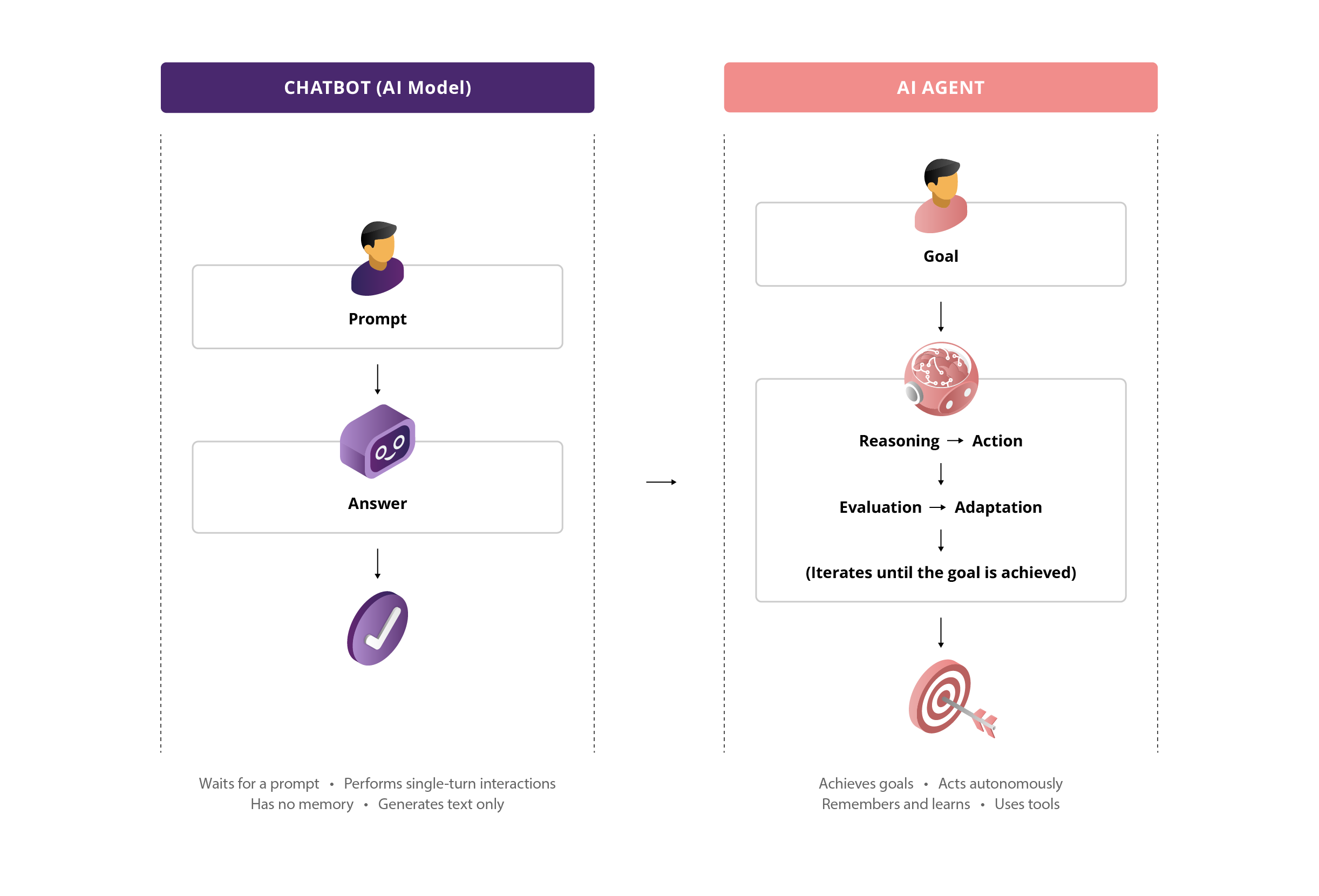
Fig. 1: Difference between an AI model and an AI agent
In the Cloud for AI context, agents aren’t mere add-ons or extensions—they form a core architectural layer that transforms the solution from a processing system into an ecosystem of intelligent collaboration. Each agent is more than just a piece of code performing a task—it’s a full-fledged participant in the digital workspace, equipped with perception, analysis, decision-making, and action capabilities.
How AI Agents Work: The Cognitive Architecture of Digital Workers
Understanding AI agent architecture requires looking at it both technologically and through the lens of human functioning. Just as humans use reasoning to analyze and plan, senses to perceive, memory to store experiences, and the body to act, AI agents have their own digital equivalents.
Reasoning
At the heart of every Cloud for AI agent is the “brain”—a large language model acting as the reasoning engine. This isn’t just a text generator. With advanced prompt engineering and fine-tuning, it evolves into a structured thinking system, capable of contextual analysis and decision-making. It uses the chain-of-thought technique, so each decision is preceded by an explicit reasoning process that can be tracked and verified.
Perception
An AI agent’s perception system goes far beyond processing text queries. Cloud for AI agents implement multimodal perception—they can “see” through image analysis, “hear” via audio processing, and even “sense” system states by monitoring metrics and logs. These inputs are integrated into a unified situational representation, much like the human brain integrates sensory data into a coherent understanding of reality.
Memory
AI agent memory is a hierarchical information storage system. It consists of:
- a working memory, which is a fast in-RAM cache storing current context and recent interactions,
- a short-term memory, which is Redis-based storage holding data from recent hours or days,
- a long-term memory, which is vector databases such as Milvus or Qdrant for semantic storage and retrieval,
- a procedural memory, which is embedded in fine-tuned models and learned patterns, containing problem-solving “skills.”
Body
The execution system is the agent’s “hands”—tools and interfaces for real-world digital action. Agents can run SQL queries, call APIs, modify files, send messages, or even create and manage other agents. Tools come with schemas the agent can understand and apply in the right context, including both native and Model Context Protocol (MCP) tools.
New Security Challenges with AI Agents
The rise of AI agents also introduces new cyber risks. A 2025 study by Gray Swan AI and the UK AI Security Institute found that nearly 100% of AI agents were compromised within just 10–100 attempts. This was the largest AI security test to date, involving nearly 2,000 participants who carried out 1.8 million attacks on 22 state-of-the-art language models.
The takeaway is clear: before entrusting AI agents with mission-critical tasks, organizations must establish a strong security foundation. Current solutions remain too vulnerable to determined attackers.
Deploying AI agents requires preparation, continuous monitoring, human oversight in critical decisions, and—above all—multi-layered security. Cloud for AI enables secure implementation, protecting organizations from both traditional threats and new agent-specific attack vectors. (For more on new cyberthreat types and Cloud for AI’s security architecture, see The Age of the AI Act: How to Build Secure and Compliant AI Systems. Cloud for AI – Part 2.)
Agent Frameworks in the Cloud for AI Ecosystem
Cloud for AI has been designed as a universal solution—one that doesn’t enforce a single approach to building agents but supports the best existing frameworks while adding its own layers of security, monitoring, and orchestration. In this context, frameworks refer to sets of tools, libraries, and ready-to-use software components that make it easier to create, run, and manage AI agents. Think of them as the “skeleton” or “platform” for building systems in which artificial intelligence performs specific tasks autonomously or semi-autonomously.
See how popular agent frameworks integrate with Cloud for AI and what capabilities this synergy offers.
LangChain
LangChain has become the standard for building applications based on Large Language Models (LLMs). It offers a rich set of abstractions for processing chains, agents, and tools. In Cloud for AI, LangChain is not only supported but also deeply integrated and enhanced with enterprise-grade capabilities.
Every LangChain agent launched in Cloud for AI automatically receives additional attributes. Most importantly, all agent operations are transparently logged and monitored. You do not need to modify your code—Cloud for AI automatically instruments LangChain agents with telemetry, metrics, and distributed tracing.
Processing chains in LangChain can also be optimized automatically. The system analyzes usage patterns and suggests—or directly applies—optimizations such as caching frequent prompts, parallelizing independent steps, or switching to smaller, faster models for simpler tasks.
CrewAI
CrewAI takes a unique approach to multi-agent systems, organizing agents into “crews” with defined roles and hierarchy. Cloud for AI preserves this model and extends it with added capabilities.
In Cloud for AI, each crew runs in its own container with precisely allocated resources—allowing hundreds of crews to operate in parallel with guaranteed performance and isolation. The system scales dynamically, reallocating resources in real time based on workload.
Role-based resource allocation in Cloud for AI allows you to precisely match resources to an agent’s role. Allocations are dynamic—the system monitors resource usage and can reallocate them in real time.
Cloud for AI analyzes historical agent performance data and can suggest optimal task assignments. For example, if the system notices that a particular researcher agent is especially effective in analyzing financial data, it will assign such tasks to them.
AutoGen
AutoGen from Microsoft makes it possible to create AI agents capable of engaging in natural, multi-party conversations. Cloud for AI integrates AutoGen with additional features that make these conversations more secure and productive.
Every AutoGen conversation in Cloud for AI is recorded and transcribed—complete with speaker attribution and timestamps—while preserving context. Transcripts are semantically indexed, making them fully searchable by keyword or meaning.
We are also currently working on support for Google Agent Development Kit and Agent2Agent.
Your Own Path: Building Custom Frameworks
Cloud for AI doesn’t lock you into ready-made frameworks. It provides a rich set of primitives and APIs to create highly specialized agent frameworks tailored to your organization.
The Agent SDK offers low-level modules—from memory management and tool execution to inter-agent communication and monitoring. You can combine them in any way, creating solutions perfectly tailored to your organization’s needs.
Thanks to the framework adapter layer, you can easily wrap your custom framework in Cloud for AI’s standard interfaces. This means your solution immediately gains access to all the platform’s features—security, scalability, and monitoring—without the need to rewrite your code.
Multi-Framework Orchestration: Full Synergy of Capabilities
The real magic happens when different frameworks work together. Our platform, for example, enables the creation of heterogeneous agent systems in which each component uses the framework best suited to the task.

Fig. 2: Agent framework integration
Imagine a corporate document analysis system where:
- Haystack agents handle ingesting and extracting information from documents,
- LlamaIndex agents create and maintain semantic knowledge indexes,
- LangChain agents perform analysis and respond to user queries,
- CrewAI orchestrates the process, ensuring the right agents get the right tasks,
- AutoGen agents converse with users, helping them formulate questions and interpret results.
This approach makes collaboration between AI agents not only possible but entirely natural.
Monitoring and Debugging Agents
Debugging regular software is hard enough; debugging autonomous AI agents is a different challenge altogether. One-off configuration and testing won’t cut it—real issues emerge only in production, where agents face unpredictable scenarios, evolving data, and real-world interactions.
The old post-mortem debugging model falls short. Instead, you need tools that provide real-time insight into an agent’s decision-making:
- Transparent reasoning. Agents should log their thought process before acting, including how they interpreted a query, what constraints they identified, what options they considered, and why they made a particular choice.
- Sandboxing critical actions. High-risk operations should first run in isolated environments to predict outcomes before execution.
- Checkpoints and rollbacks. The ability to pause agents at critical points for human review and to undo actions if needed.
The success of AI agent deployment depends less on their raw capabilities and more on the quality of monitoring and control. Research, like that from Gray Swan, shows AI agents are vulnerable—making continuous oversight essential. Organizations that invest in robust monitoring mechanisms will be able to use AI agents safely, while others risk operational and business disruption.
AI agents are not static programs—they’re dynamic systems that require ongoing observation, adaptation, and improvement. Only this approach allows organizations to scale their use safely in critical business areas.
Summary
AI agents are no longer science fiction—they’re here. Far from replacing humans, they’ll support us, taking over routine work so we can focus on creativity, empathy, and ethical judgment. We’re witnessing the rise of distributed, collaborative, adaptive intelligence. The future belongs to organizations that can blend human intuition with machine precision, human creativity with machine scalability, and human wisdom with machine knowledge.
Cloud for AI is the bridge to that future—secure, capable, and ready to help you build, deploy, and scale AI agents with full control, security, and legal compliance.
If you’re ready to explore how AI agents and Cloud for AI can transform your organization, reach out to our experts via the form below. Let’s talk about the possibilities!
